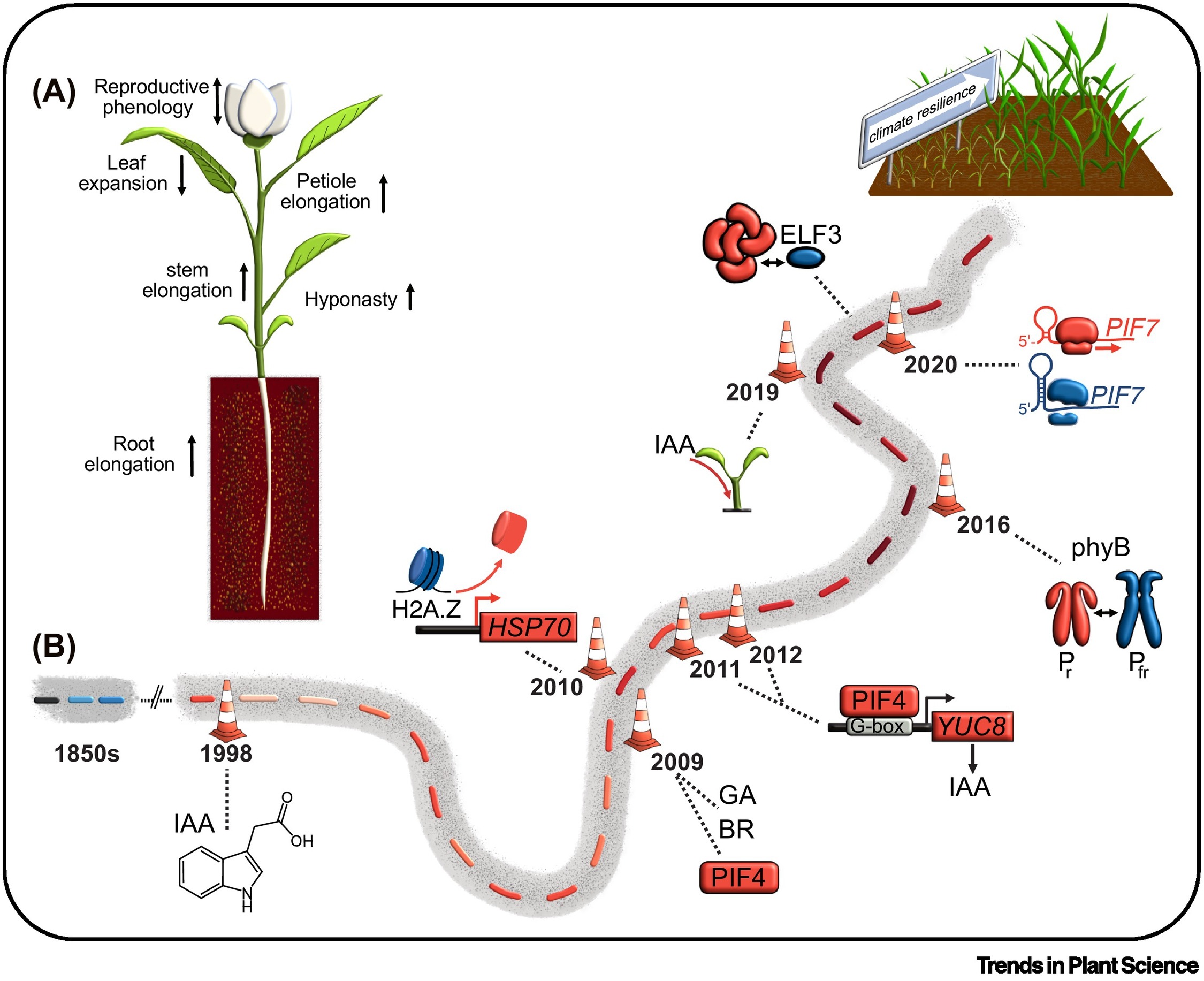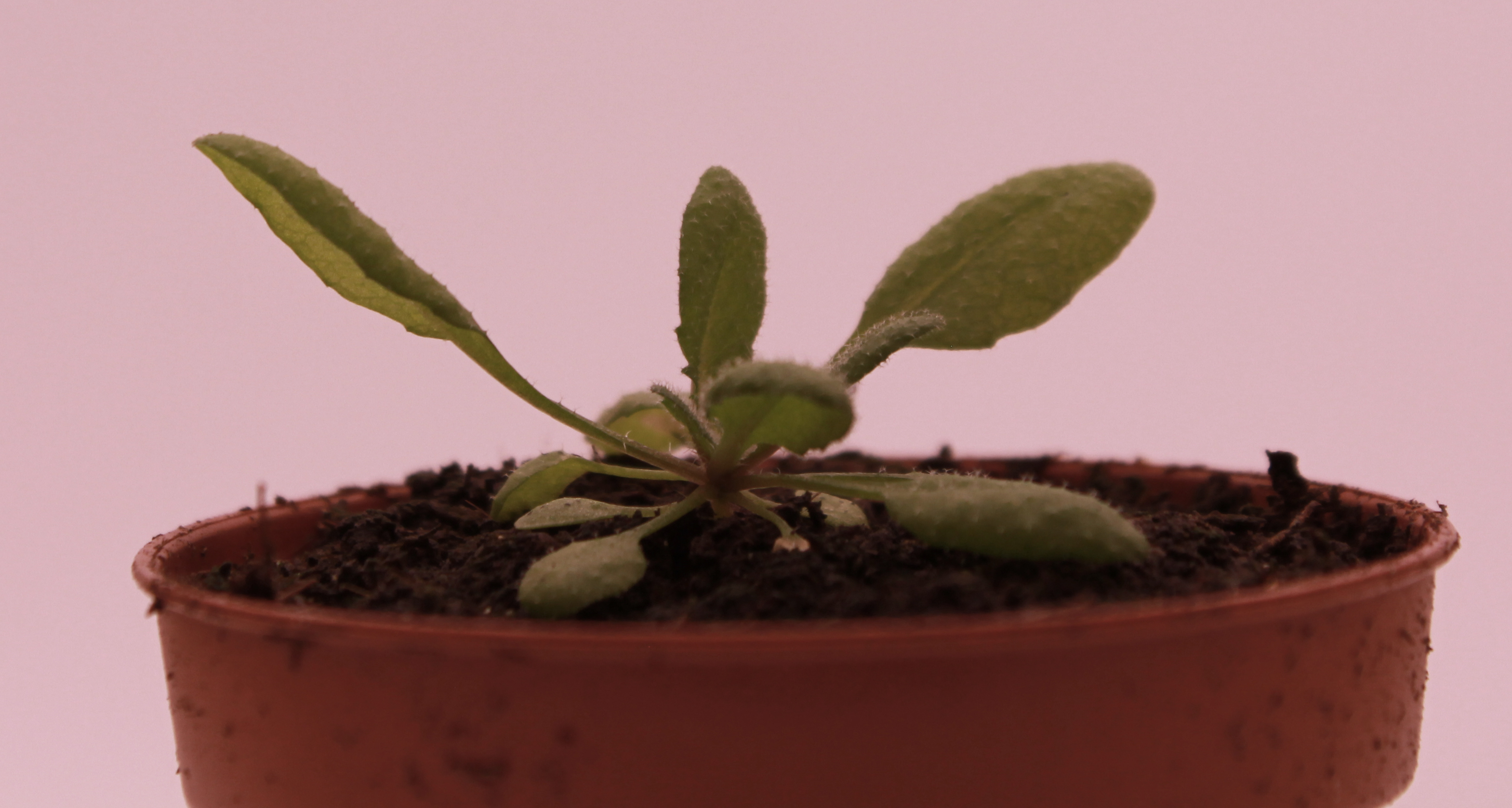Almost every organism is exposed to variation in temperature, on a daily and on a seasonal basis. This is especially true for plants that, as sessile organisms, need to continuously alter their growth, development, and physiology in response to temperature variation. To sense and respond to temperature changes, several molecular sensors and downstream signalling and response networks have evolved. Although our understanding of temperature perception and response in plants has increased in recent years, we still know relatively little about the cellular signalling cascades that control architectural adaptations to high ambient temperatures (referred to as thermomorphogenesis), which allow improved cooling by evaporation to withstand warm temperatures.
Key Publications:
The membrane-localized protein kinase MAP4K4/TOT3 regulates thermomorphogenesis.
Vu LD, Xu X, Zhu T, Pan L, van Zanten M, de Jong D, Wang Y, Vanremoortele T, Locke AM, van de Cotte B, De Winne N, Stes E, Russinova E, De Jaeger G, Van Damme D, Uauy C, Gevaert K, De Smet I.
Nat Commun. 2021 May 14;12(1):2842.
Warm temperature triggers JOX and ST2A-mediated jasmonate catabolism to promote plant growth.
Zhu T, Herrfurth C, Xin M, Savchenko T, Feussner I, Goossens A, De Smet I.
Nat Commun. 2021 Aug 10;12(1):4804.
Zhu S, Pan L, Vu LD, Xu X, Orosa-Puente B, Zhu T, Neyt P, van de Cotte B, Jacobs TB, Gendron JM, Spoel SH, Gevaert K, De Smet I.
New Phytol. 2024 Jan;241(2):687-702.
Developmental Programming of Thermonastic Leaf Movement.
Park YJ, Lee HJ, Gil KE, Kim JY, Lee JH, Lee H, Cho HT, Vu LD, De Smet I, Park CM.
Plant Physiol. 2019 Jun;180(2):1185-1197.


